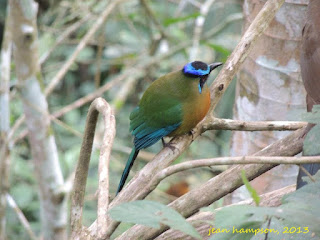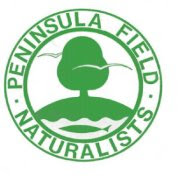On Monday August 15, Jean and I received some e-mail notifications of a rare sighting in Niagara. Josh Vandermeulen and his fiancée Laura had found a Lark Sparrow at the end of the east pier in Port Weller. They observed the bird for a few minutes and had great views until it disappeared and was not seen again. That was sufficient for Jean and I to visit the East Spit the following day after I finished work.
We observed our lifer Lark Sparrow in Fort Erie on December 1, 2013. Our only Lark Sparrow observation and as Josh indicated in his posting, it was the second record for the Niagara Region. That was a great day for lifers and should be left for another tale.
Arriving in Port Weller, we parked near the yellow gate on the Seaway Haulage Road and began the 2.5 kilometer walk to the end of the East Pier. The winds were strong and bird sightings were limited during the hike. At the end of the pier, we ran into Josh and Laura trying for a second viewing of the Lark Sparrow. The bird had not been seen by them nor were there any other reports throughout the day. We talked about birds and life in Niagara for a bit and then continued our hikes separately.
Jean and I stayed near the end of the pier and checked out the rocky shoreline for shorebirds. It was pretty quiet. Visits this fall will most likely produce some good birds. Before we started walking back along the trail on the lake side of the spit, I spotted a low flying butterfly. When it rested on the ground, we identified it as a Common Buckeye. Our first sighting of this species for 2016!
A fresh, crisp and clean specimen. No damage to the wings of this Junonia coenia. Common Buckeyes can be found in southern Ontario, mostly as a migrant, during the summer months.
Returning south along the east side of the spit, we checked out the larger pond for waterfowl. Water levels in this pond have dropped due to the lack of rainfall but some dabbling ducks were found. Josh had mentioned he had seen Green-winged Teal and I was hoping they were still there. Jean and I needed this species for our Niagara year list . We found three Anas creca with a handful of Mallards and had great views of the teal's green speculum through our spotting scope.
In the brush by the pond, Jean spotted two juvenile Eastern Kingbirds and a concerned parent arrived so we moved on.
No Lark Sparrow for the 2016 list but I was quite happy getting Green-winged Teal out of the way. Next species on the target list is Pied-billed Grebe. This is the latest we have gone without seeing this species in Niagara. The ponds behind the Niagara College campus in Niagara-on-the-Lake were a reliable spot in the past but changes to the habitat there have made it unfavourable to the grebe. I'll keep my eye on the eBird alerts and will double check other small bodies of water when Jean and I are out birding. There are some species you just don't want to miss when trying to stay near the top of the table.

















